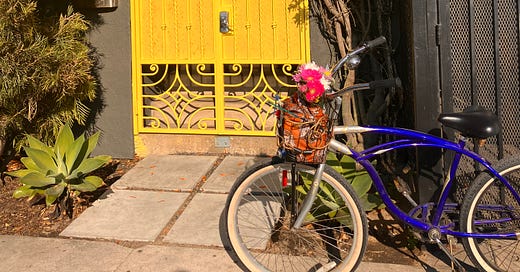This morning, I woke up wanting to write a blog post for the first time in months. This post might seem a little depressing, but I will conclude will some uplifting and actionable ideas, I promise!
It’s not a coincidence that my last post was in November 2024. Since then, many of us have been wracked with anxiety that the progress we have made in the past few centuries is being bulldozed away. Among the horrors, it is clear that this administration is far less supportive of safe streets and active transportation than the previous one.
The new president wants to tie transportation funding to marriage and birth rates, which does not bode well for our aging population. A key Complete Streets federal web page was taken down. And one of the most powerful men in Washington wants to eliminate electric vehicle (EV) tax credits*.
Meanwhile, the local outlook has not been rosy either. We had a horrible pedestrian death in Kingston in December; Gary White, a 77 year old man, was crossing Broadway in a crosswalk with good visibility. The incident was not reported to the public for over a week and the police report contained inaccuracies and victim-blaming. The city’s handling of the aftermath of this incident was disrespectful at best. I will dedicate a separate post to Gary.
Then, we have to contend with the ingrained car-centric attitudes present in all recent complete-streets related projects. And reticence from local leaders (even those who support complete streets) to embrace frameworks such as Vision Zero.
On the local transit front, I recently received an email from a senior who was stranded with an empty pantry when UCAT’s weekly Rural Route was canceled due to the so-called “driver shortage.” Meanwhile, UCAT has added a tourism-focused route to Belleaire. Although routes are frequently cancelled due to the lack of drivers, I have yet to see any indication that significant efforts have been made to address the driver shortage.
I often wonder what would happen if our economy were to go into a depression. The number of car-less people in suburban and rural areas would likely skyrocket. Cars have already become prohibitively expensive in recent years. Meanwhile, we continue to build car-centric sprawl and are slow to build affordable housing in areas where car ownership could be optional.
So, what can we do?
First of all: when you’re in a hole, stop digging. This means we need to fundamentally change our attitudes and priorities on the local level when it comes to transportation projects, which still prioritize “level of service” for cars. Level of service which essentially aims to reduce wait times… for the speediest form of transportation out there. Meanwhile, level of service thwarts safety and convenience for pedestrians, cyclists and transit users. This essentially feeds the cycle of degrading the quality of alternative forms of transportation, and making cars the default.
Attitudes and priorities are more essential than funding, full stop.
Second, we need to make a ruckus. We need to make it clear that the status quo is unacceptable, and say it loud so the people in the back can hear. Write op eds and cc your elected leaders.
Third, we need to problem solve. And we need to focus on low cost, quick implementation ideas, such as those used in tactical urbanism. We also need to collaborate and be open-minded about learning from all types of people.
Fourth, mutual aid will become increasingly important in the coming years. We have become a society of islands. So offer your elderly neighbor a ride or pick up their groceries, lend someone a bike or buy the kids next door a helmet and lights.
Fifth, we need to get together and have fun. Getting bogged down in the injustice of it all will lead to burn out. As Emma Goldman once said, “If I can't dance, it's not my revolution!”
While the big picture seems of out control, focusing on the local level can have tangible impacts.
Just pick one issue that is meaningful to you, and take one action. That is all that is needed to start.
Thank you for reading!
Footnote:
*The elimination of tax credits for EVs, championed by an EV maker, just goes to show how unserious the goal of transitioning to EVs has always been. We’re already woefully behind on EV adoption in New York State, having only reached 17% of our goal for EVs to make up 35% of new vehicles sold by 2026. It’s unclear whether there’s any actual plan to ramp up sales in time. And, even in the optimistic scenario of EVs representing 50% of new cars sales by 2030, about a third of cars will be fossil fueled in 2050. The “EV revolution” is not the answer, and never has been.





Your five points are inspiring! Thanks for writing this.
Thank you for this, Ella! Love the encouragement of local actions, mutual aid, and not forgetting to experience joy together <3 <3